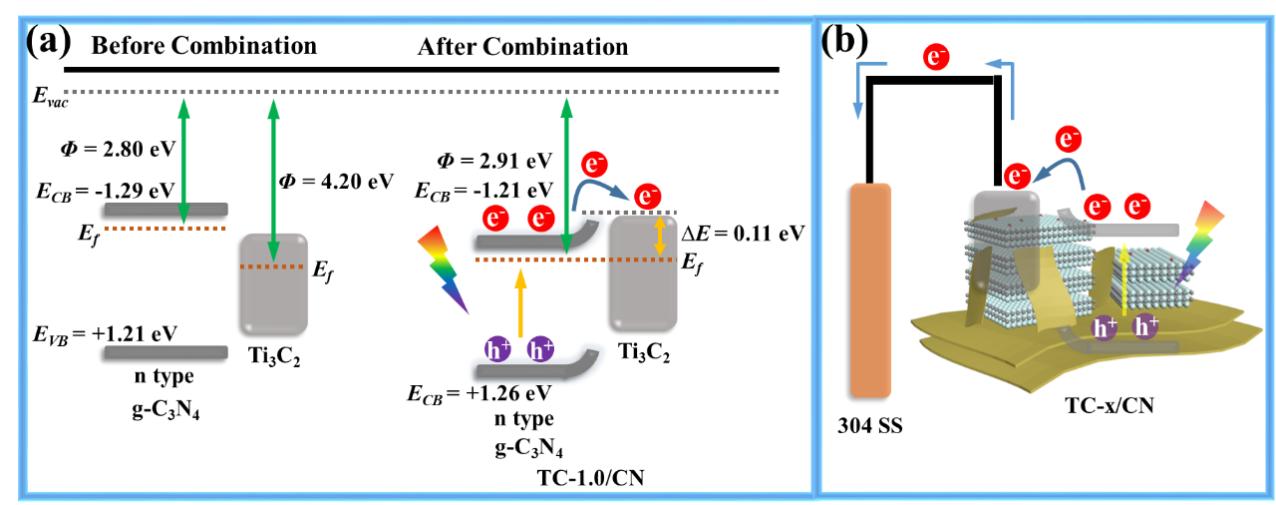As one of vital engineering and structural materials, steel has a wide range of industrial applications. However, under the interaction with some surrounding components, the corrosion process inevitably occurs, which not only causes tremendous economic loss and disastrous accidents, but also causes irreversible environmental pollution.
Photoelectrochemical (PEC) cathodic protection was a relatively promising anti-corrosion technology because of its economical, eco-friendly, and energy-saving virtues.
The charge separation effect of Schottky junction structure on the interface can greatly improve the performance of PEC. Therefore, it is of great significance to develop new Schottky junction structural materials.
Recently, the research team led by Dr. MA Xiumin from the Institute of Oceanology, Chinese Academy of Sciences (IOCAS), found new insight into photocatalytic activities and PEC performance.
The study was published in Journal of Photochemistry and Photobiology A: Chemistry.
Researchers found that Ti3C2Tx MXene/g-C3N4 composites showed good photoelectrochemical cathodic protection performance for 304 steel.
The Pure g-C3N4 nanosheets and Ti3C2 nanosheets were prepared by the thermopolymerization method and the chemical etching method, and then, the TC-x/CN composites were prepared by the one-step electrostatic self-assembly method.
Compared with pure g-C3N4, the charge carrier density of TC-x/CN composites was improved, which directly conformed the high separa-tion effect of Schottky junction at the interface between g-C3N4 and Ti3C2 on the spatial charge, greatly improved the original performance.
Through the treatment of 304 stainless steel corrosion contrast determination, found that the enhanced PEC performance of g-C3N4 and TC-x/CN composites was also investigated by the LSV curve under intermittent visible light illumination.
The current density of TC-x/CN composites was larger than that of pure g-C3N4 at both negative and positive bias potential, which revealed that more electrons are generated and accumulated in TC-1.0/CN composites. Compared with pure g-C3N4, the onset potential of TC-1.0/CN slightly shifted from - 0.479 V to - 0.542 V, which verified a larger driving force for the electrons transfer from TC-1.0/CN to the 304 SS. These results confirm TC-1.0/CN composite can offer a better photocathodic protective effect on the 304 SS.
Through the characterization of the sample structure and performance, it could infer that the electron density at the surface of g-C3N4 was more intensive than that of Ti3C2. When n-type g-C3N4 was in contact with Ti3C2, their Fermi level would be converged, resulting in the energy band of g-C3N4 would bend upward and form the Schottky barrier with 0.11 eV.
"Because of the formation of the Schottky barrier, the electrons cannot flow back to the conduction band of g-C3N4. Therefore, the construction of the Schottky junction can efficiently boost the photo-induced spatial charge separation," said Dr. MA.
This work provides a new idea for the design and synthesis of MXene-based pho-toanode for PEC cathodic protection.
This study was supported by the National Natural Science Foundation of China, Science and Technology Research Program of China Railway, Applied Basic Research Program of Nantong.

The schematic illustration of Schottky junction at the interface between Ti3C2 and g-C3N4 (a); and the possible electron transfer pathway over TC-x/CN coupled with 304 SS under the visible light illumination (b).
MA Xiumin
Institute of Oceanology
E-mail: xma@qdio.ac.cn
(Editor: ZHANG Yiyi)
|
|

Address: 7 Nanhai Road, Qingdao, Shandong 266071, China
Tel: 86-532-82898902 Fax: 86-532-82898612 E-mail: iocas@qdio.ac.cn


